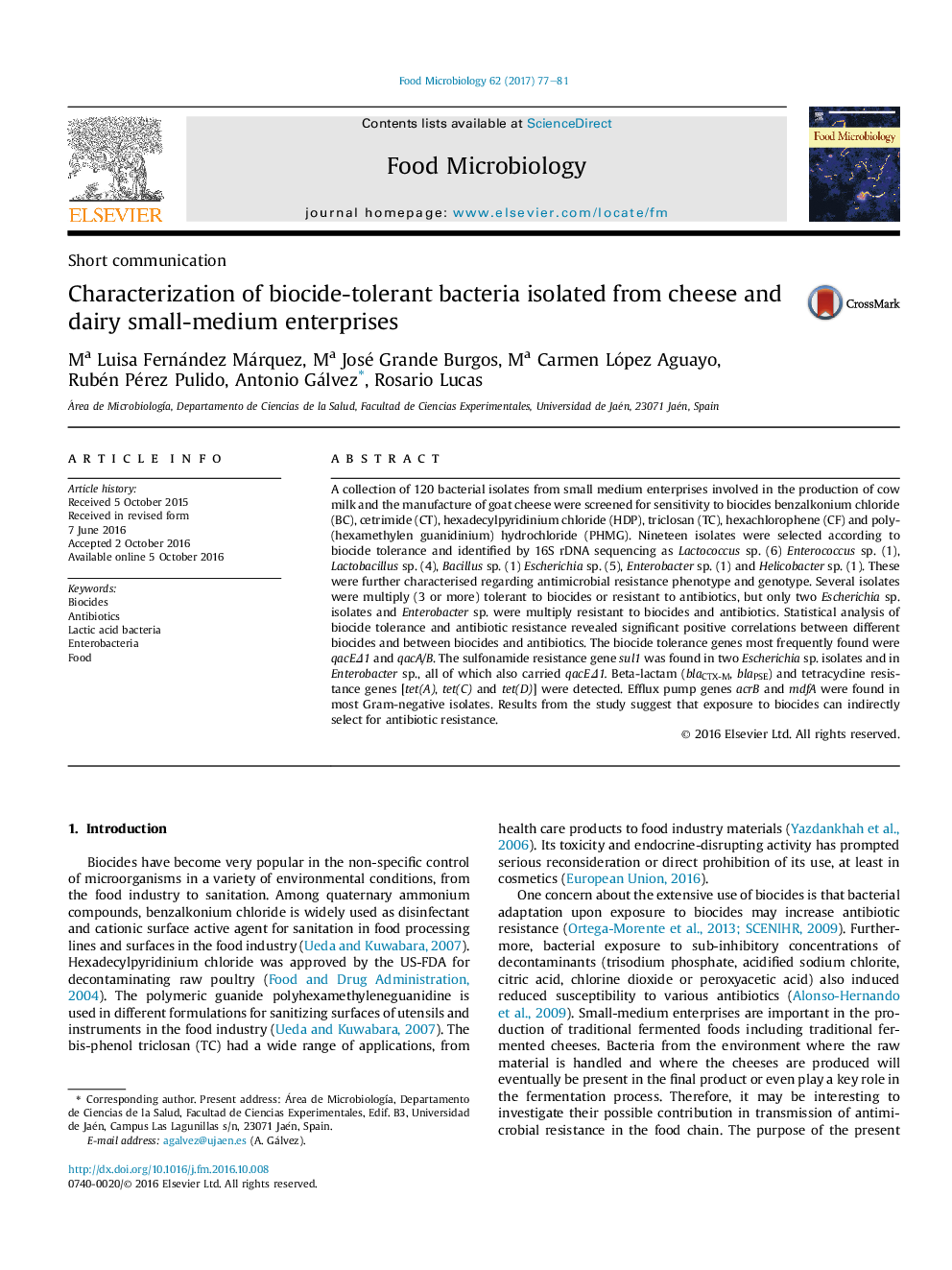| Article ID | Journal | Published Year | Pages | File Type |
|---|---|---|---|---|
| 4362536 | Food Microbiology | 2017 | 5 Pages |
•Biocide tolerance in dairy environments was reported.•Biocide-tolerant lactic acid bacteria and Enterobacteria were detected.•Co-resistant isolates to biocides and antibiotics were frequent.•Multiply-resistant isolates were infrequent.
A collection of 120 bacterial isolates from small medium enterprises involved in the production of cow milk and the manufacture of goat cheese were screened for sensitivity to biocides benzalkonium chloride (BC), cetrimide (CT), hexadecylpyridinium chloride (HDP), triclosan (TC), hexachlorophene (CF) and poly-(hexamethylen guanidinium) hydrochloride (PHMG). Nineteen isolates were selected according to biocide tolerance and identified by 16S rDNA sequencing as Lactococcus sp. (6) Enterococcus sp. (1), Lactobacillus sp. (4), Bacillus sp. (1) Escherichia sp. (5), Enterobacter sp. (1) and Helicobacter sp. (1). These were further characterised regarding antimicrobial resistance phenotype and genotype. Several isolates were multiply (3 or more) tolerant to biocides or resistant to antibiotics, but only two Escherichia sp. isolates and Enterobacter sp. were multiply resistant to biocides and antibiotics. Statistical analysis of biocide tolerance and antibiotic resistance revealed significant positive correlations between different biocides and between biocides and antibiotics. The biocide tolerance genes most frequently found were qacEΔ1 and qacA/B. The sulfonamide resistance gene sul1 was found in two Escherichia sp. isolates and in Enterobacter sp., all of which also carried qacEΔ1. Beta-lactam (blaCTX-M, blaPSE) and tetracycline resistance genes [tet(A), tet(C) and tet(D)] were detected. Efflux pump genes acrB and mdfA were found in most Gram-negative isolates. Results from the study suggest that exposure to biocides can indirectly select for antibiotic resistance.
